
Lake Ray Hubbard, near Dallas, is a scenic destination for fishing and family outings. Its clear waters and diverse fish species make it a popular spot for anglers.
Overview of Lake Ray Hubbard
Lake Ray Hubbard, located near Dallas, Texas, is a 22,000-acre lake offering excellent fishing and recreational opportunities. Known for its clear waters, the lake attracts anglers targeting species like largemouth bass, white bass, and blue catfish. Its marina provides boat rentals and amenities, making it a hub for both family outings and serious fishing trips. The lake’s diverse ecosystem and seasonal fishing patterns ensure year-round fishing action, catering to both beginners and experienced anglers.
Importance of a Fishing Guide
A fishing guide on Lake Ray Hubbard is essential for maximizing your angling success. Guides like Brandon Sargent and Noel Ibarra offer deep knowledge of the lake’s hotspots, seasonal patterns, and techniques. They provide expert advice on tackle selection and fish behavior, ensuring a productive and enjoyable experience. Whether targeting largemouth bass or blue catfish, their expertise helps anglers navigate the lake’s diverse ecosystem, making each trip memorable and rewarding for both novices and seasoned fishermen alike.
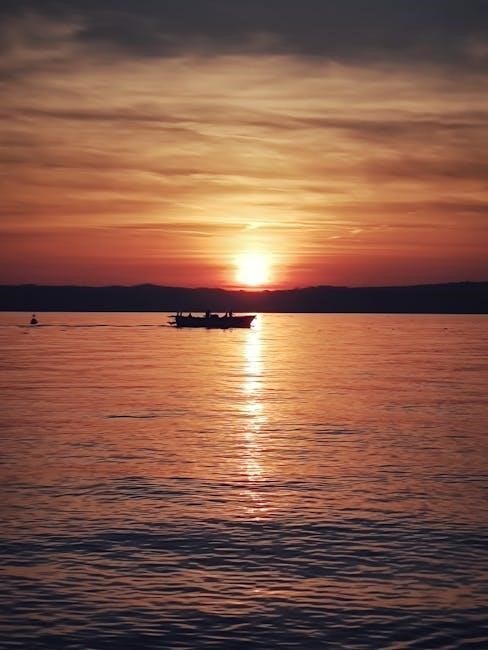
Top Targeted Fishing Species
Lake Ray Hubbard is renowned for its diverse fish population. Top targeted species include Alligator Gar, Blue Catfish, Crappie, Largemouth Bass, and White Bass, making it a hotspot for anglers.
Alligator Gar
Alligator Gar are a prized catch in Lake Ray Hubbard, known for their impressive size, reaching up to 8 feet. These ancient predators thrive in shallow waters near vegetation or drop-offs. Anglers target them using sturdy gear and live bait, often fishing during warmer months when they’re most active. Their powerful fight makes them a thrilling challenge. Expert guides like Brandon Sargent recommend specific techniques to land these trophy fish, making Lake Ray Hubbard a hotspot for Gar enthusiasts seeking an unforgettable fishing experience.
Blue Catfish
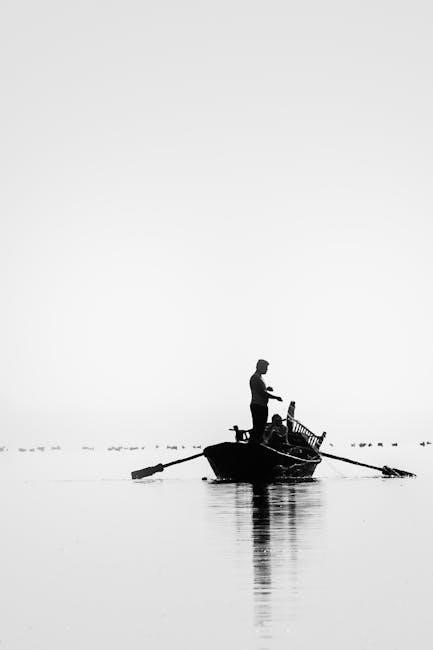
Blue Catfish are abundant in Lake Ray Hubbard, with trophy-sized catches reported annually. These strong fighters prefer deep waters and submerged structures. Guides like Noel Ibarra recommend using heavy tackle and bottom-dwelling bait. Seasonal patterns show peak activity in spring and fall, with fish weighing up to 50 pounds. Their rich flavor makes them a favorite for anglers seeking both sport and a tasty reward, enhancing Lake Ray Hubbard’s reputation as a premier catfish fishing destination in Texas.
Crappie
Crappie are a popular species in Lake Ray Hubbard, known for their flavorful meat and exciting catch. They thrive in submerged brush piles and structural areas. Anglers often use jigs or minnows to target them, with spring being the peak season as they move into shallower waters for spawning. Local guides like John Varner emphasize the importance of understanding seasonal patterns and using the right techniques to successfully catch crappie, making Lake Ray Hubbard a hotspot for both novice and experienced anglers seeking this species.
Largemouth Bass
Largemouth bass are abundant in Lake Ray Hubbard, thriving in vegetated areas and along riprap structures. They are sought after for their aggressive behavior and strong fights. Anglers typically use plastic worms, jigs, and topwater lures to catch them, with peak activity during early morning and late evening hours. Summer months offer prime opportunities as bass seek cooler, deeper waters. Local guides, such as John Varner, specialize in targeting largemouth bass, sharing expert tips on seasonal patterns and effective techniques for a successful catch.
White Bass
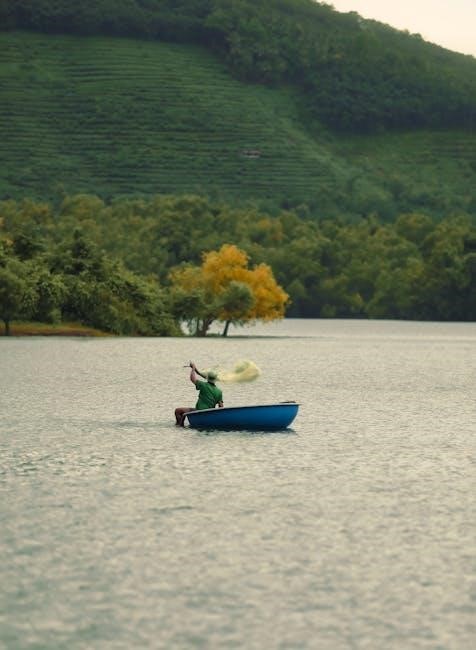
White bass are highly sought after in Lake Ray Hubbard, often schooling in the lower lake and near humps. They are active during summer and fall, feeding on shad. Anglers use small jigs and spoons to catch them. John Varner, a local guide, specializes in white bass, teaching techniques like reading fish finders and using seasonal patterns. These fish provide exciting action, making them a favorite for both experienced anglers and beginners. Their schooling behavior offers ample opportunities for a successful fishing trip on the lake.
Top Fishing Techniques
Popular techniques include crappie jigs, live bait, trolling, and structure-based fishing. These methods effectively target species like largemouth bass and white bass in Lake Ray Hubbard.
Crappie Jigs
Crappie jigs are a highly effective technique for catching crappie in Lake Ray Hubbard. Anglers use small, lightweight jigs in various colors to mimic baitfish or insects. These lures are often tipped with live bait for added appeal. Jigging near submerged brush piles or humps can be particularly productive, as crappie tend to congregate around these structures. The subtle movement and versatility of crappie jigs make them a favorite among local guides and anglers targeting this species.
Live Bait
Live bait is a top choice for many anglers on Lake Ray Hubbard, particularly for targeting species like Blue Catfish and White Bass. Minnows, shad, and worms are popular options that mimic natural prey. Live bait is often used near submerged brush piles, humps, and riprap areas where fish congregate. Its lifelike movement and scent attract predators effectively, making it a reliable method for both novice and experienced anglers seeking success on the lake.
Trolling
Trolling is a highly effective technique on Lake Ray Hubbard, especially for targeting White Bass and Hybrid Striped Bass. By slowly moving lures or baits behind a boat, anglers can cover large areas and locate schooling fish. Medium to heavy action rods and reels with 10-15 lb test lines are ideal. Popular lures include spoons and crankbaits, which mimic baitfish. Trolling near the lake’s lower sections and channels often yields success, particularly during seasonal fish movements. Guides frequently adjust trolling patterns to match fish behavior, ensuring productive outings.
Structure-Based Fishing
Structure-based fishing on Lake Ray Hubbard focuses on targeting fish near underwater features like humps, points, and submerged brush piles. These areas attract species such as Crappie and White Bass. Anglers use jigs, minnows, and crankbaits to probe these structures. Riprap areas along the shoreline are also productive, especially for Largemouth Bass. Guides often emphasize the importance of understanding contour maps to locate these hotspots. Seasonal patterns influence which structures are most active, making local knowledge invaluable for success.
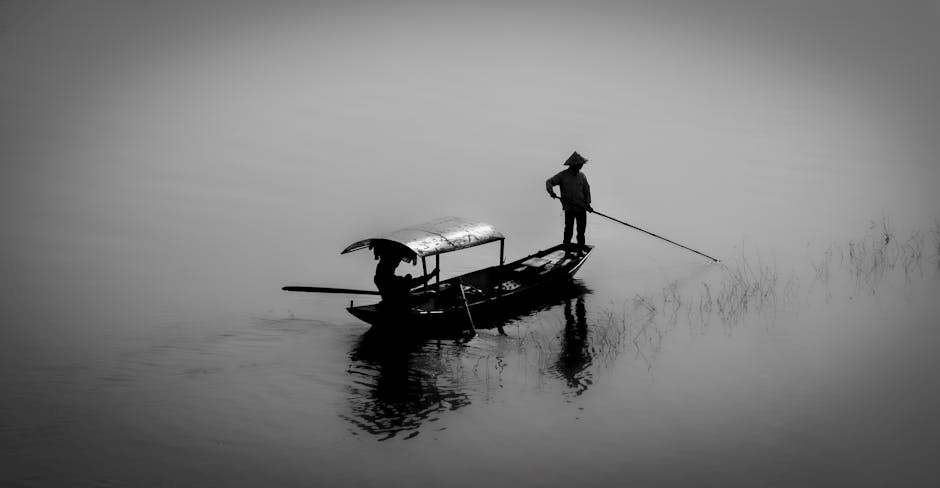
Fishing Guides on Lake Ray Hubbard
Experienced guides like Brandon Sargent and Noel Ibarra offer expert knowledge of Lake Ray Hubbard’s fishing hotspots, ensuring memorable trips for both novice and seasoned anglers.
Brandon Sargent
Brandon Sargent, owner of Lead Slingers Guide Service, is a renowned fishing guide on Lake Ray Hubbard; With extensive knowledge of the lake’s hotspots, he specializes in year-round fishing trips. His custom 27-foot guide boat is equipped with GPS to locate prime fishing areas. Brandon targets species like white bass, largemouth bass, and blue catfish, ensuring an unforgettable experience for anglers of all skill levels. His expertise and local insights make him a top choice for fishing enthusiasts near Dallas.
Noel Ibarra
Noel Ibarra, a skilled fishing guide on Lake Ray Hubbard, is known for his expertise in targeting blue catfish and other species. He gained attention for catching a 32.06-pound blue catfish in shallow water, which he believed might be albino. Noel’s knowledge of the lake’s structure and seasonal patterns ensures successful trips. His guide service offers family-friendly experiences, focusing on white bass, hybrid striped bass, and largemouth bass. His passion for fishing and teaching anglers makes him a trusted guide for memorable outings on the lake.
Michael Littlejohn
Michael Littlejohn, a seasoned guide on Lake Ray Hubbard, operates a reputable service specializing in family and corporate fishing trips. With a fleet of five large, comfortable boats, he offers year-round fishing experiences. His expertise lies in targeting species like white bass, hybrid striped bass, and largemouth bass. Located near Dallas, his service is ideal for anglers seeking convenience and quality. Michael’s passion for teaching and ensuring memorable outings makes him a trusted choice for fishing enthusiasts of all skill levels.
John Varner
John Varner, an expert guide on Lake Ray Hubbard, excels in teaching anglers how to catch white bass and other species. He focuses on seasonal patterns, fish finder techniques, and lure selection. John’s knowledge of submerged brush piles and riprap areas ensures successful outings. His patient approach makes him ideal for both novice and experienced anglers, offering tailored trips to maximize fishing success and enjoyment on the lake.
James Watson
James Watson, operating as RBFinwithJW Guide Service, offers expert fishing trips on Lake Ray Hubbard, Lake Lavon, and Lake Tawakoni. Specializing in white bass and hybrid striped bass, he provides tailored experiences for anglers of all skill levels. His extensive knowledge of local fishing spots, such as humps and points, ensures productive outings. James’s dedication to customer satisfaction makes him a trusted choice for both family and corporate fishing excursions in the region.
Seasonal Fishing Patterns
Lake Ray Hubbard’s fishing patterns vary by season, with species behavior changing in spring, summer, fall, and winter. Guides adapt strategies to match these shifts effectively.
Spring Fishing
Spring fishing on Lake Ray Hubbard is exceptional, with species like largemouth bass and crappie becoming more active as water temperatures rise. Anglers target shallow areas near vegetation and submerged structures. White bass and hybrid striped bass also move into shallower waters during this time, making them easier to catch. Guides often recommend using live bait or jigs to maximize success. This season is ideal for both experienced anglers and beginners looking to reel in a variety of fish species.
Summer Fishing
Summer fishing on Lake Ray Hubbard offers exciting opportunities as fish seek cooler, deeper waters. Species like largemouth bass and catfish are often found near submerged brush piles or riprap areas. White bass and hybrid striped bass school in deeper sections, making trolling effective. Guides recommend using lures that mimic baitfish or nightcrawlers for catfish. The clear waters allow for sight fishing, and the warm weather creates a vibrant fishing environment for anglers of all skill levels to enjoy.
Fall Fishing
Fall fishing on Lake Ray Hubbard is a prime time for targeting species like white bass and crappie as they migrate to shallower waters. Largemouth bass becomes more active, feeding aggressively before winter. Anglers often use jigs and crankbaits near submerged structures or humps. Guides recommend focusing on points and riprap areas where fish congregate. The cooler weather enhances bite activity, making fall a rewarding season for both experienced anglers and newcomers exploring the lake’s diverse fishing opportunities.
Winter Fishing
Winter fishing on Lake Ray Hubbard offers prime opportunities to target species like crappie and blue catfish, which congregate in deeper waters. Anglers often use live bait such as minnows or shad, as fish metabolism slows, requiring a more patient approach. The cooler months bring consistent bites, especially in submerged brush piles and riprap areas. Experienced guides recommend focusing on structure-based techniques to maximize success during this season.

Best Fishing Spots
Key areas include humps, points, riprap, and submerged brush piles. These spots attract species like white bass and crappie, making them ideal for productive fishing sessions.
Humps
Humps are submerged underwater structures that rise above the surrounding lake floor, creating ideal habitats for fish. These areas attract species like white bass and hybrid striped bass, as they provide ambush points and feeding opportunities. Anglers often target humps during spring and summer, when fish are most active. The clear waters of Lake Ray Hubbard make it easier to locate these structures using depth finders, enhancing the chances of a successful catch in these prime fishing spots.
Points
Points are highly productive fishing spots on Lake Ray Hubbard, offering transitions between shallow and deep waters. These areas attract species like hybrid striped bass and white bass, which often school near points during feeding times. Largemouth bass can also be found near vegetated points or those lined with riprap. Points provide ambush points for predators and are ideal for casting jigs or live bait, making them a key location for anglers seeking consistent action throughout the year.
Riprap Areas
Riprap areas along Lake Ray Hubbard’s shores are prime fishing spots, especially for largemouth bass. These rocky structures provide habitat for baitfish, attracting predators like bass and catfish. Anglers often target these areas with crankbaits, plastic worms, or live bait. Riprap zones near points or drop-offs are particularly productive, as they offer ambush points for fish. Seasonal patterns show increased activity in spring and fall, making riprap areas a consistent hotspot for successful fishing trips on the lake.
Submerged Brush Piles
Submerged brush piles in Lake Ray Hubbard are key habitats for crappie and white bass, particularly in the lower lake; These underwater structures attract baitfish, making them hotspots for predators. Anglers often target these areas with jigs or minnows, especially during spring when crappie spawn near the piles. Seasonal patterns show increased activity in fall as fish congregate around submerged brush. These hidden structures are less visible but highly productive, offering anglers a prime location for successful catches throughout the year.
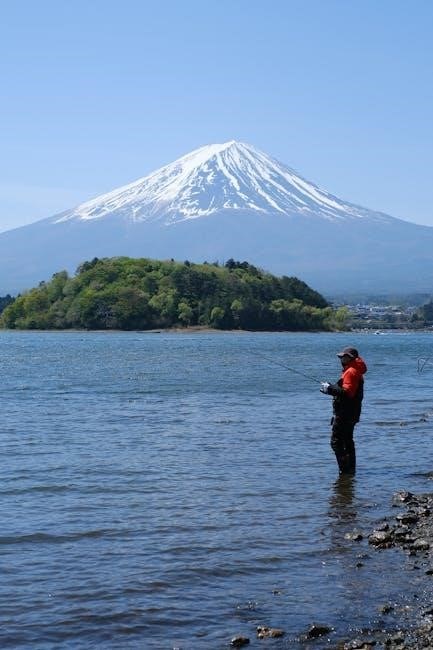
Tackle and Gear Recommendations
For success on Lake Ray Hubbard, use medium to heavy action rods and reels with sturdy lines. Jigs, crankbaits, and live bait are highly effective for targeting species.
Rods
Medium to heavy action rods are ideal for Lake Ray Hubbard fishing. For panfish and crappie, use medium-light rods (6-7 feet) with sensitivity. Bass and catfish require medium-heavy (7-8 feet) rods for strength. Heavy action rods (8-9 feet) are best for larger species like alligator gar. Graphite rods offer excellent sensitivity, while fiberglass rods provide durability. Pair rods with reels suited for the target species to ensure optimal performance and control during your fishing experience on the lake.
Reels
Spinning and baitcasting reels are popular choices for Lake Ray Hubbard fishing. For panfish and crappie, use lightweight spinning reels (2000-3000 series). Baitcasters (low-profile, 6.3:1 gear ratio) are ideal for bass and catfish. Trolling reels are best for larger species like alligator gar. Ensure reels have a smooth drag system and sufficient line capacity (15-20 lb test). Pair reels with rods suited for your target species to maximize efficiency and control during your fishing trip on the lake.
Lines

Choosing the right fishing line is crucial for success on Lake Ray Hubbard. Monofilament and fluorocarbon lines are popular for their strength and invisibility. For panfish and crappie, use 8-12 lb test monofilament; Fluorocarbon lines (10-15 lb) are ideal for bass and catfish due to their sensitivity. Braided lines (15-20 lb) are best for trolling or targeting larger species like alligator gar. Match your line strength to the species you’re targeting to ensure effective hook sets and minimize line breakage during your fishing trip.
Lures
Lures are essential for targeting specific species in Lake Ray Hubbard; Soft plastic jigs and spinnerbaits work well for crappie and white bass. Crankbaits are effective for largemouth bass near submerged structures. Spoon lures attract schooling white bass, while topwater lures excel for bass in shallow waters. For catfish, use stink baits or heavy jigs. Choose lures that imitate baitfish or natural prey to increase your chances of success. The right lure selection can make a significant difference in your fishing experience on the lake.
Bait
Live bait is highly effective on Lake Ray Hubbard. Minnows are ideal for crappie and white bass, while nightcrawlers attract catfish and largemouth bass. Shad bait is perfect for targeting alligator gar and larger predators. Chicken livers are a top choice for blue catfish. Live baitfish, like shad or herring, work well for white bass and hybrid striped bass. Using fresh, lively bait ensures better results. Anglers should keep bait well-oxygenated and present it naturally to mimic the lake’s ecosystem, increasing the likelihood of a successful catch.
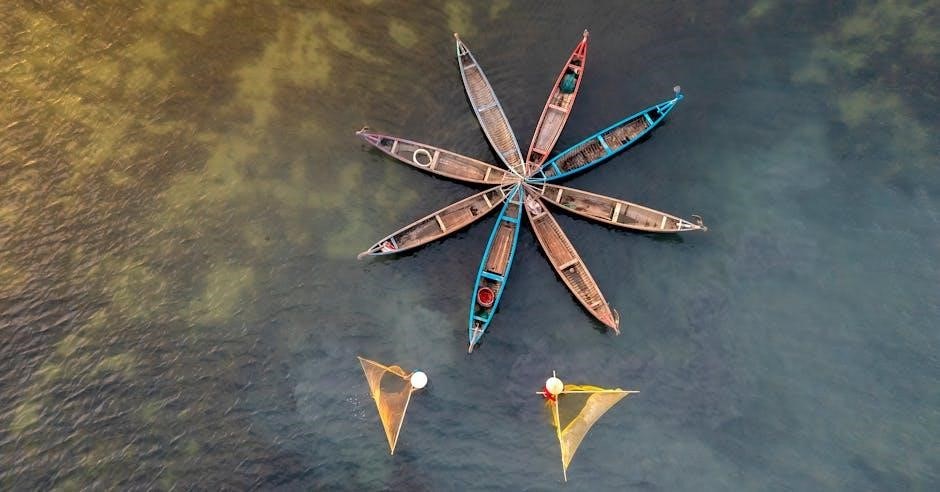
Boating and Marina Information
Lake Ray Hubbard offers convenient boat rentals and marina amenities. A new full-service boathouse is planned, featuring canoe and kayak rentals, outdoor tables, and more.
Boat Rentals
Boat rentals at Lake Ray Hubbard cater to diverse needs, offering comfortable center console boats for fishing trips. Options include large boats operated by experienced guides, perfect for family or corporate outings. Rentals provide easy access to fishing hotspots and ensure a hassle-free experience. With marina amenities nearby, visitors can enjoy convenient services while exploring the lake’s abundant fish species and scenic beauty.
Marina Amenities
Lake Ray Hubbard’s marina offers a range of amenities, including boat rentals, canoe and kayak options, and outdoor tables for relaxation. Plans for a full-service boathouse are underway, promising enhanced facilities. The marina provides convenient access to fishing gear, snacks, and other essentials, making it a hub for anglers and families alike. These amenities ensure a seamless and enjoyable experience for all visitors to the lake.
Local Fishing Reports and Regulations
Texas Parks and Wildlife provides weekly fishing reports for Lake Ray Hubbard, detailing fish activity and seasonal patterns. Adhering to local regulations ensures sustainable fishing practices.
Texas Parks and Wildlife Reports
Texas Parks and Wildlife provides detailed weekly fishing reports for Lake Ray Hubbard, offering insights into fish activity, water conditions, and species behavior. These reports highlight seasonal patterns, helping anglers identify peak times for targeting specific fish like white bass, largemouth bass, and blue catfish. The reports also include updates on fishing hotspots and any regulatory changes, ensuring anglers stay informed and compliant while enjoying the lake’s diverse fishing opportunities throughout the year.
Local Fishing Regulations
Fishing on Lake Ray Hubbard is governed by Texas Parks and Wildlife regulations. Anglers must obtain a valid fishing license and adhere to bag limits, size restrictions, and gear rules. Specific regulations apply to species like largemouth bass, catfish, and crappie to ensure sustainable fishing practices. Seasonal closures and catch-and-release areas may also be in effect. It’s essential to check the latest TPWD guidelines before your trip to comply with all local fishing laws and conservation efforts.
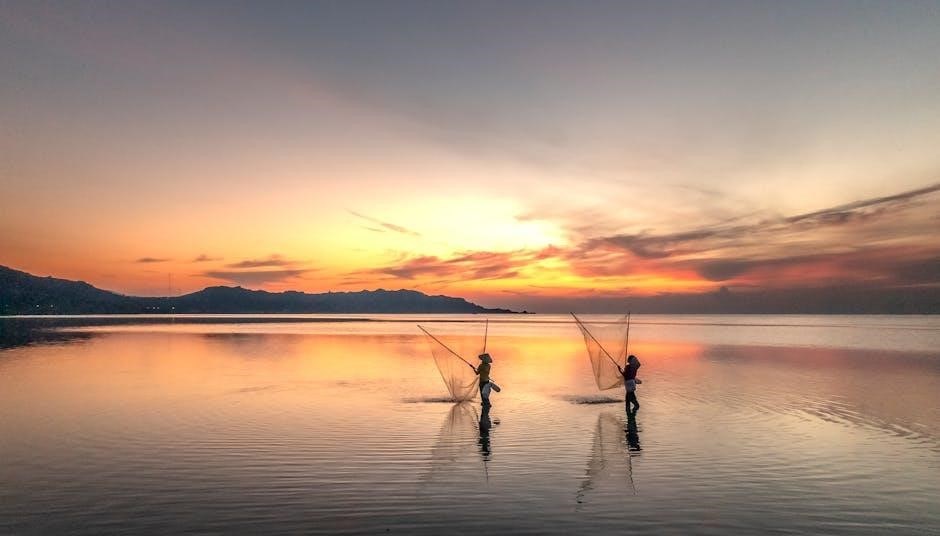
Family and Corporate Fishing Trips
Lake Ray Hubbard offers guided fishing trips perfect for families and corporate events, providing memorable experiences with expert guides like Michael Littlejohn and his team.
What to Expect
Experience a memorable outdoor adventure with Lake Ray Hubbard’s guided fishing trips. Perfect for families and corporate groups, these excursions offer personalized attention from expert guides. Trips accommodate up to 8 guests, ensuring a tailored experience for anglers of all skill levels. Focus on prime fishing spots like humps, points, and submerged brush piles to catch species such as white bass, largemouth bass, and crappie. Year-round availability ensures versatile fishing experiences, with guides offering insights into seasonal patterns and lure selection for a successful day on the water.
How to Book
Booking a fishing trip on Lake Ray Hubbard is straightforward. Contact expert guides like James Watson or JV Guide Service directly via phone or their websites. Choose from half-day or full-day trips, with options for up to 8 guests. Most guides offer all necessary gear and expertise. Be sure to inquire about seasonal availability and scheduling in advance to secure your preferred date. Clear communication ensures a tailored experience for both families and corporate groups seeking an unforgettable fishing adventure.